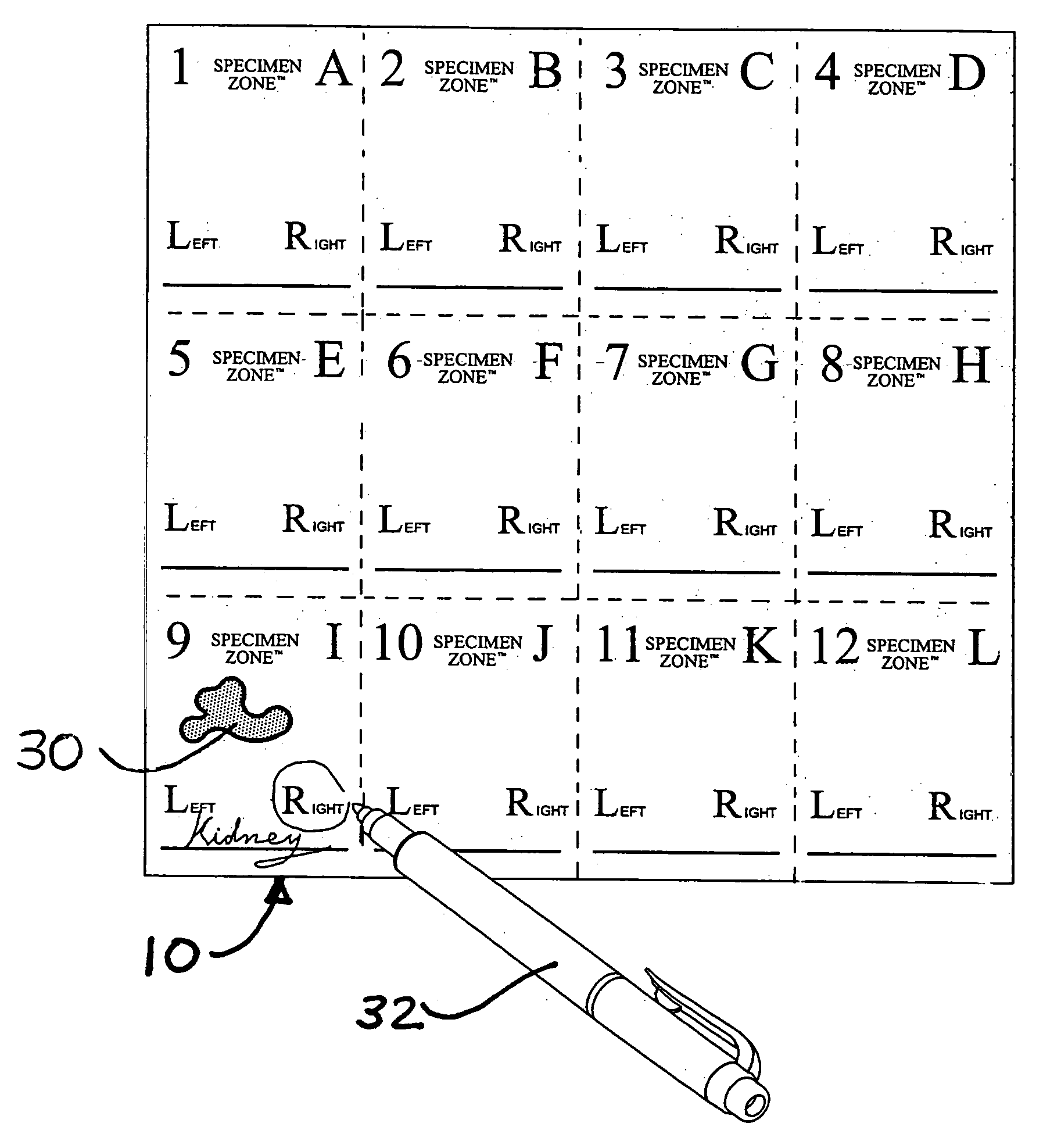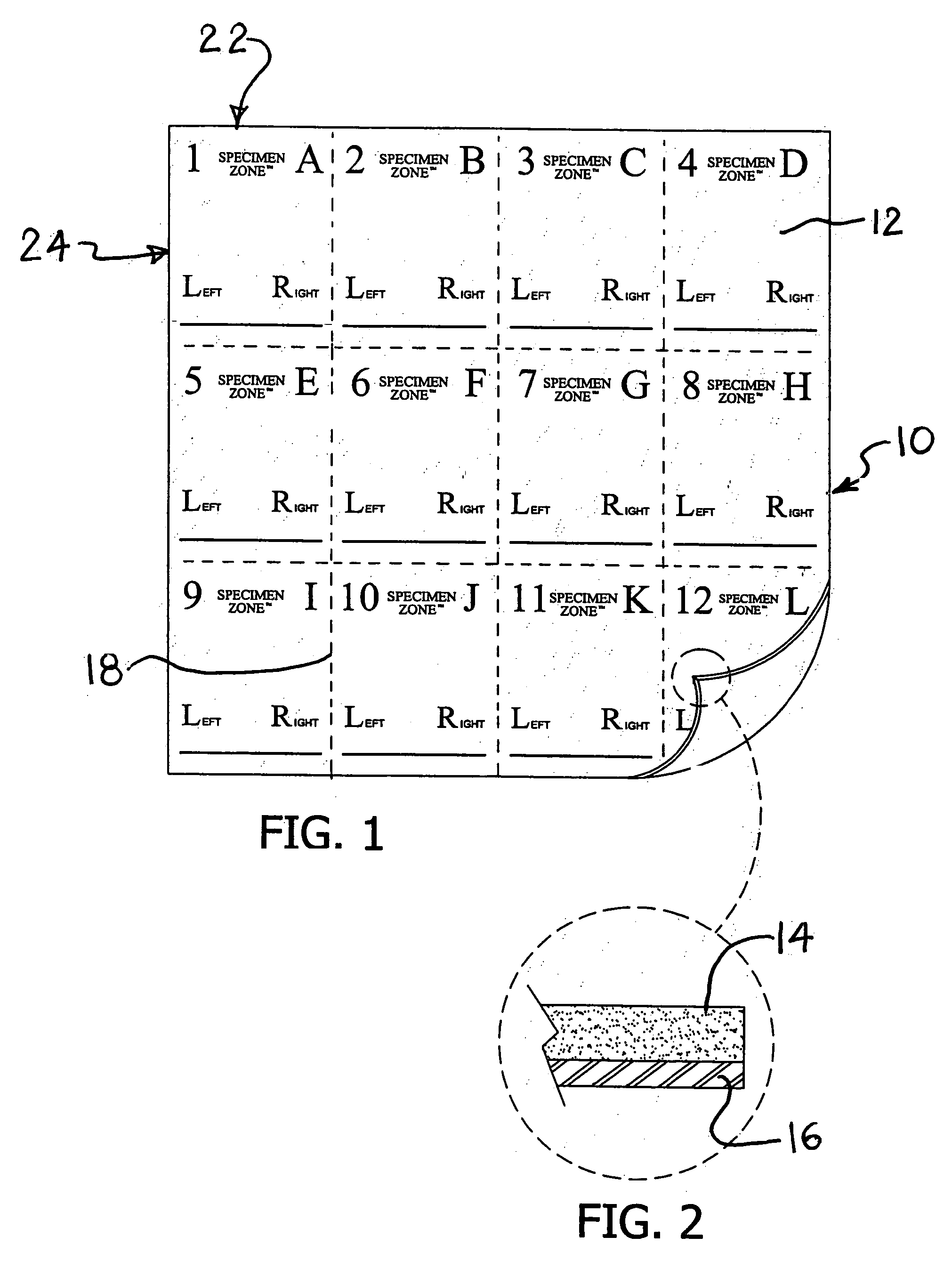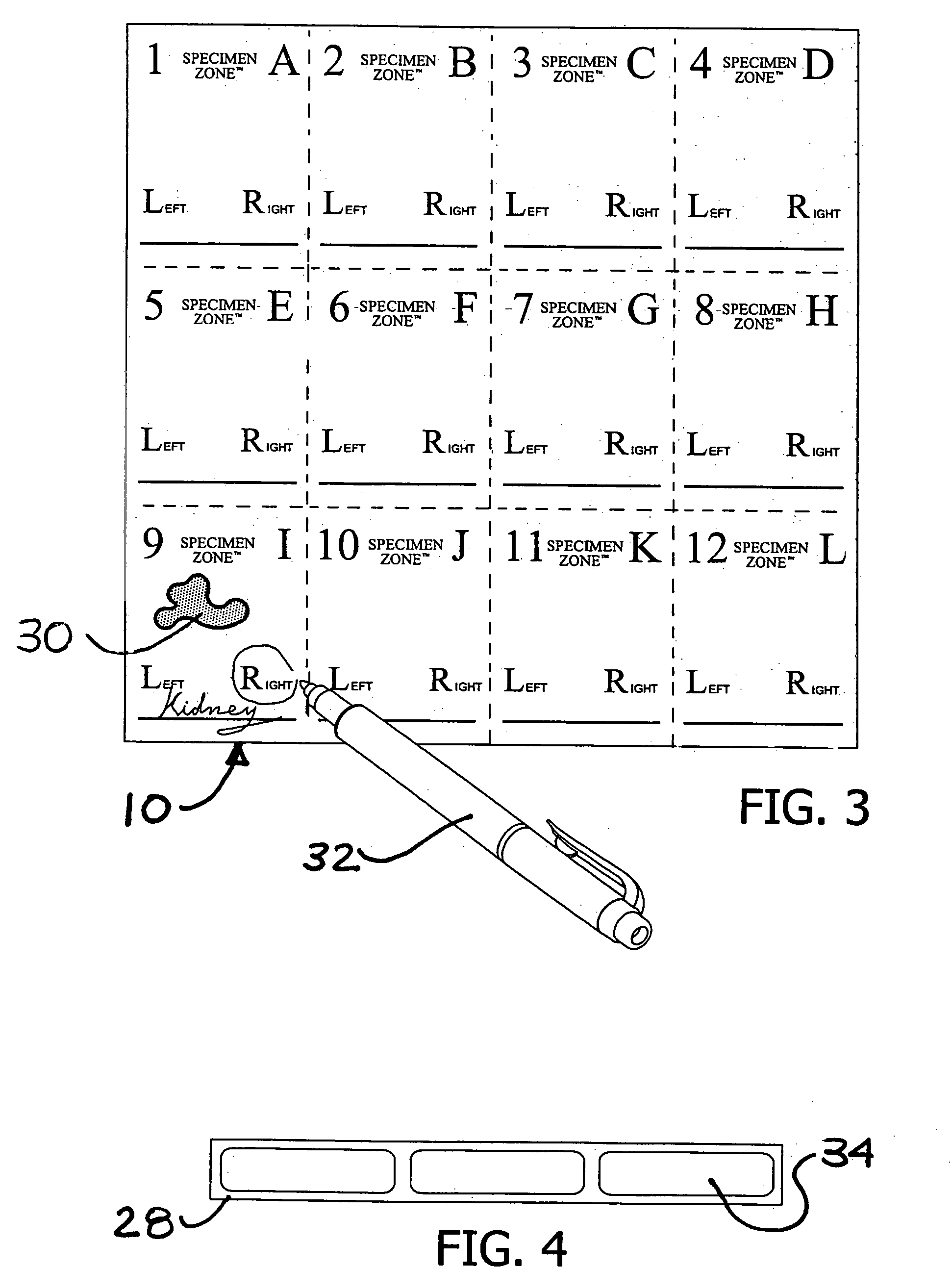Specimen labeling system
a labeling system and specimen technology, applied in the field of specimen collection, can solve the problems of no standard technique for specimen collection, labeling, or handling, difficult specimen identification, and the need for surgical team considerable effort to reliably identify each specimen
- Summary
- Abstract
- Description
- Claims
- Application Information
AI Technical Summary
Problems solved by technology
Method used
Image
Examples
Embodiment Construction
[0021] Systems for identification, labeling, organizing and transferring of specimens are described. Turning now in detail to the drawings, as shown in FIGS. 1 and 2, a specimen collection sheet 10 may be divided into multiple sections 12 by perforations 18. Although the sheet 10 may also be provided as a single layer of material, a two-layer design is shown in FIG. 2. The top layer 14 is advantageously a non-woven and non-absorbent material. The bottom layer 16, if any, may be a different material, such as polyolefin. The sheet materials are advantageously resistant to formalin and similar chemical solutions. The sheet 10 is advantageously divided into multiple square or rectangular sections 12 by the perforations 18. The sheet may or may not have an adhesive backing. The perforations 18 are advantageously provided in a way that no foreign particles debris are released. Other section dividing techniques, such as fold lines, score lines, grooves, thinned sections, etc. may also be u...
PUM
| Property | Measurement | Unit |
|---|---|---|
| adhesive | aaaaa | aaaaa |
| area | aaaaa | aaaaa |
| shape | aaaaa | aaaaa |
Abstract
Description
Claims
Application Information
 Login to View More
Login to View More - R&D
- Intellectual Property
- Life Sciences
- Materials
- Tech Scout
- Unparalleled Data Quality
- Higher Quality Content
- 60% Fewer Hallucinations
Browse by: Latest US Patents, China's latest patents, Technical Efficacy Thesaurus, Application Domain, Technology Topic, Popular Technical Reports.
© 2025 PatSnap. All rights reserved.Legal|Privacy policy|Modern Slavery Act Transparency Statement|Sitemap|About US| Contact US: help@patsnap.com



